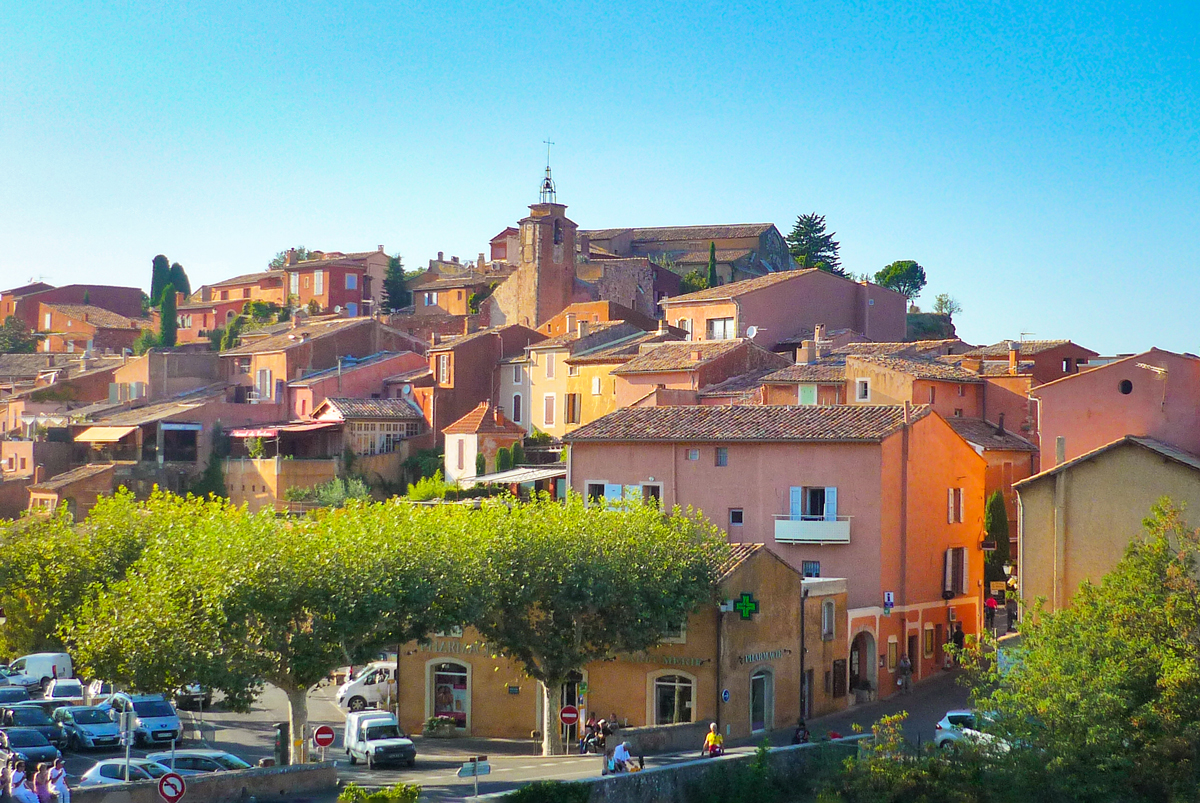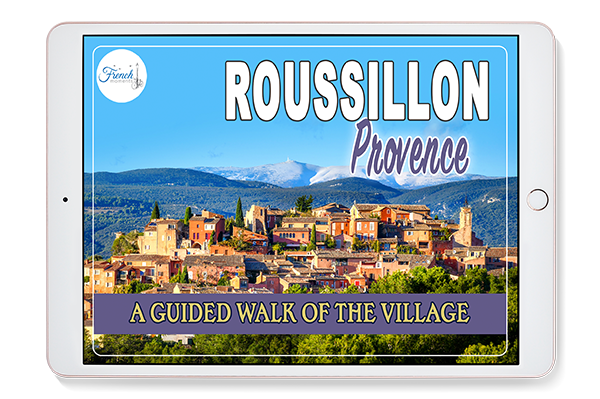Roussillon lies in the northern part of the Luberon, between the Luberon mountain and the Vaucluse Plateau. The village is famous for its ochre quarries that were exploited from the end of the 18th century until the 1930s.
Watch this short video on the Luberon!
Plan your trip to Roussillon
- 🛏 Find the best accommodations in the Luberon on Booking.com
- 🚙 Rent a car in Avignon or Marseille-Provence Airport
- 🙋♀️ Get the PASS CÔTE D'AZUR and take your pick from more than 100 amazing experiences!
- 🤩 Visit the beautiful Provençal region of Luberon
- 🚐 Join a 6-hour tour of Lourmarin, Bonnieux, Roussillon, and Gordes by air-conditioned minibus
- 🚘 Discover Provence in a 2CV. Stroll along exceptional roads and enjoy a piece of Luberon all to yourself!
- 🥗 Experience a black truffle hunting tour in a Luberon plantation
- 📚 Read the DK Eyewitness Provence and the Côte d’Azur Travel Guide
- 🗺 Check out the touristic map of Roussillon
- 🚻 Public toilets are located near Place de la Mairie and by the car parks of Saint-Michel and Les Sablons.
- 🚗 Park at the entrance to the old medieval centre: the nearest car park is at Le Pasquier. There is a charge for parking from 1 March to 16 November. More info...
Why you should visit Roussillon
Roussillon is a delightful Provençal village and the second most visited in the Luberon after Gordes. Its location at the top of a steep hill certainly gives it a fantastic panorama, and it is labelled as one of the most beautiful villages of France (plus beaux villages de France).

Roussillon and Mont Ventoux © French Moments
The village originated from a small castle built there in 987 and now contains several beauties such as the Saint Michel church and pretty, colourful facade buildings.
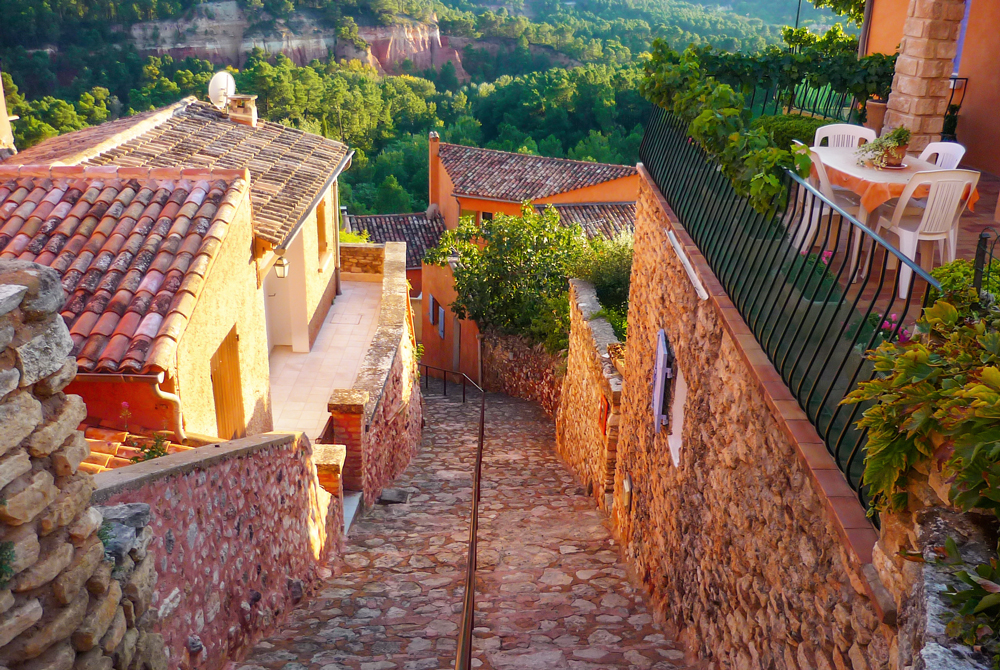
A peaceful street in the village © French Moments
The village has no historical monuments worth visiting. However, Roussillon is a not-to-miss hilltop village in the Luberon for its colourful façades. Indeed, ochres of an infinite variety compose the frontages of the houses (sometimes in trompe l'oeil on a gate or a wall) and the surrounding landscape.
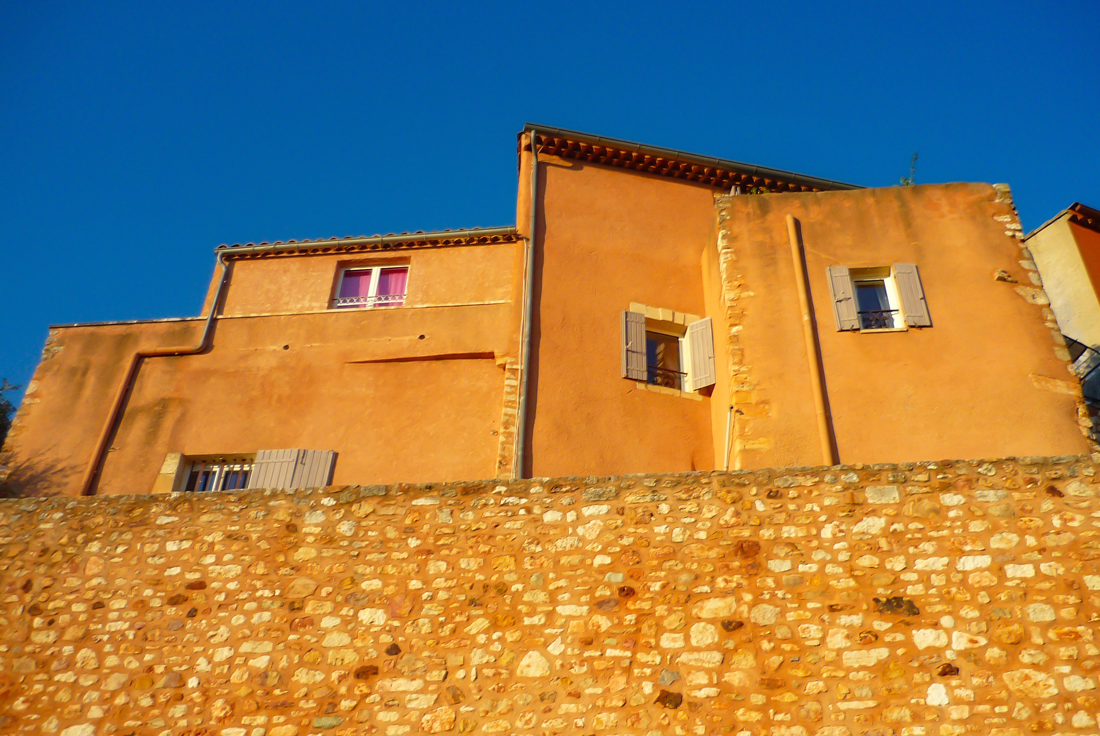
A low-angle view of the village © French Moments
Place du Pasquier
The square was first used for grazing, then for the seven annual fairs. It now serves as a car park.
The square welcomes the traditional open-air market on Thursday morning.

Place du Pasquier and Rue des Bourgades © French Moments

Place du Pasquier and Rue des Bourgades © French Moments
Rue des Bourgades
The winding central streets (rue des Bourgades, rue des Lauriers) lead to the top of the village. During your stroll, you will discover art galleries, Provençal shops and townhouses from the 17th and 18th centuries.
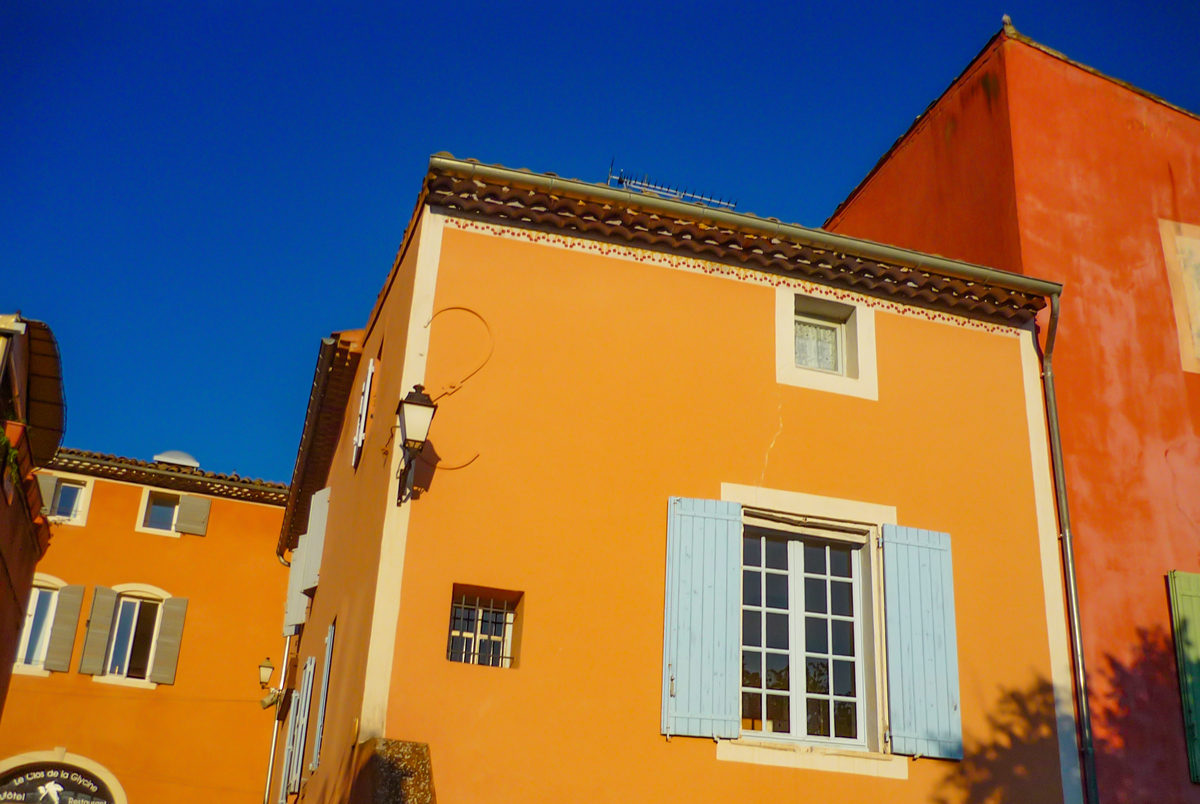
Rue des Bourgades © French Moments
At each street corner, the eye catches a typically Provençal detail which inspires one to dream.
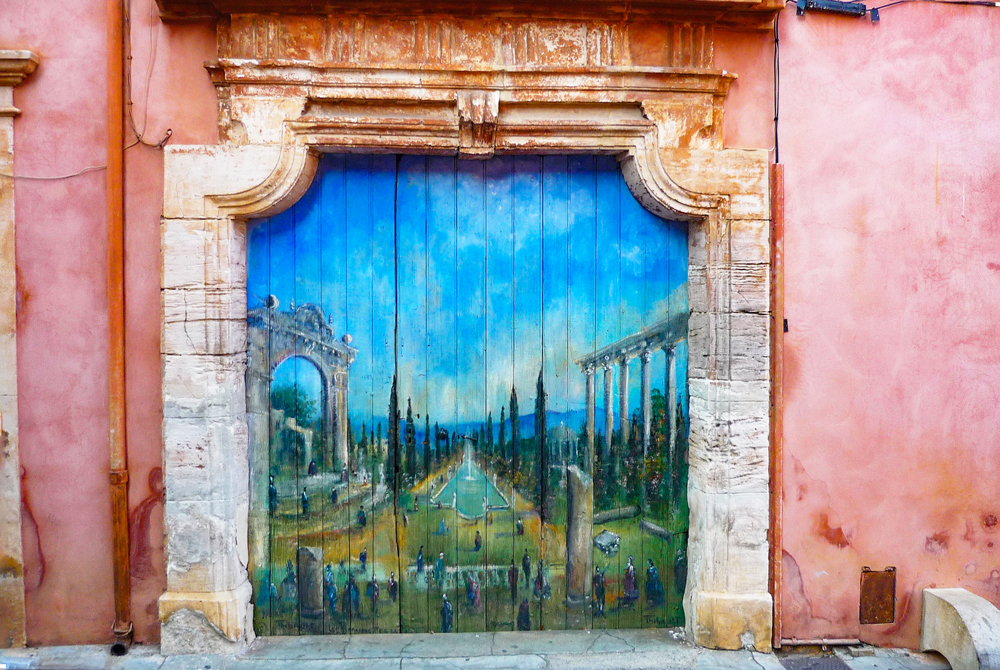
Trompe-l'œil gate in the old village © French Moments
Place de l'Abbé-Avon
This square means "le dessous du four" (under the oven) because the baker's oven was located in the rock dug out to house a house. Avon was an abbot who devoted himself during the plague epidemic of 1720. On the left is the Porte Heureuse.
Place de la Mairie
Adjacent to Place de l'Abbé-Avon is the town-hall square with beautiful 18th-century houses, including the Mairie.

Place de la mairie © French Moments
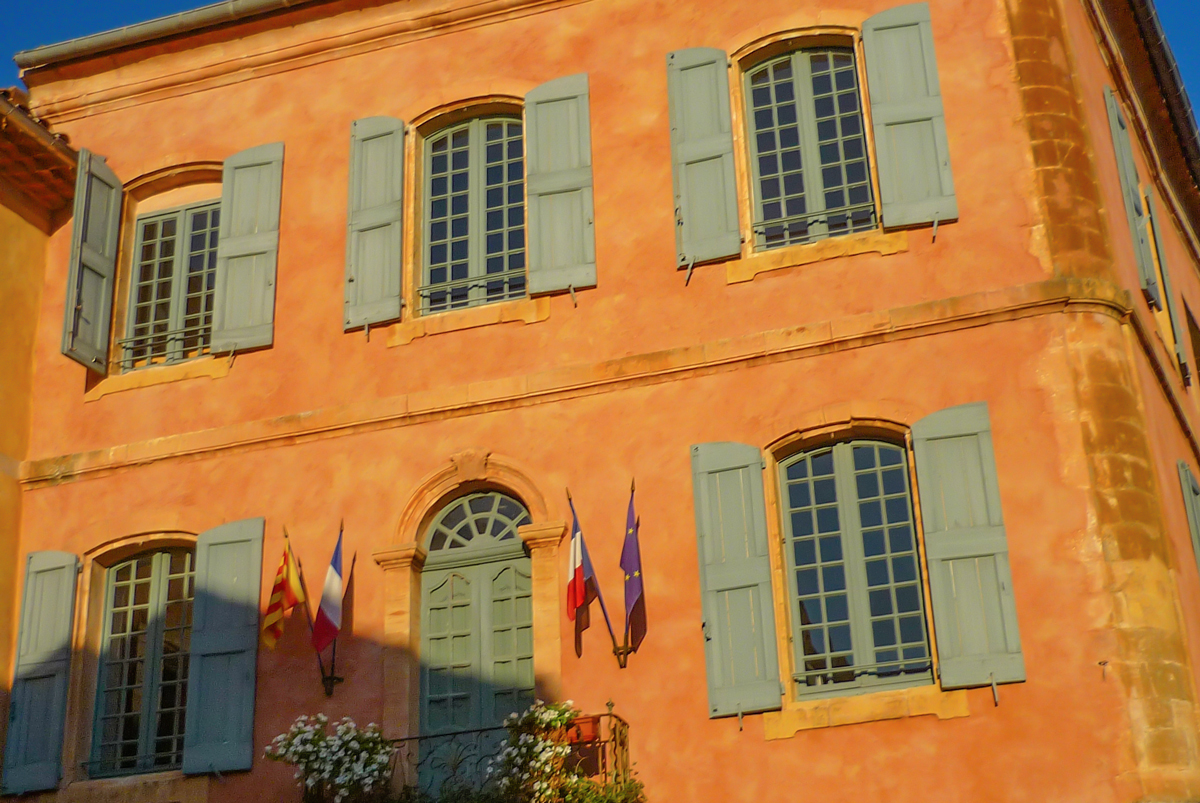
Town-Hall of Roussillon © French Moments
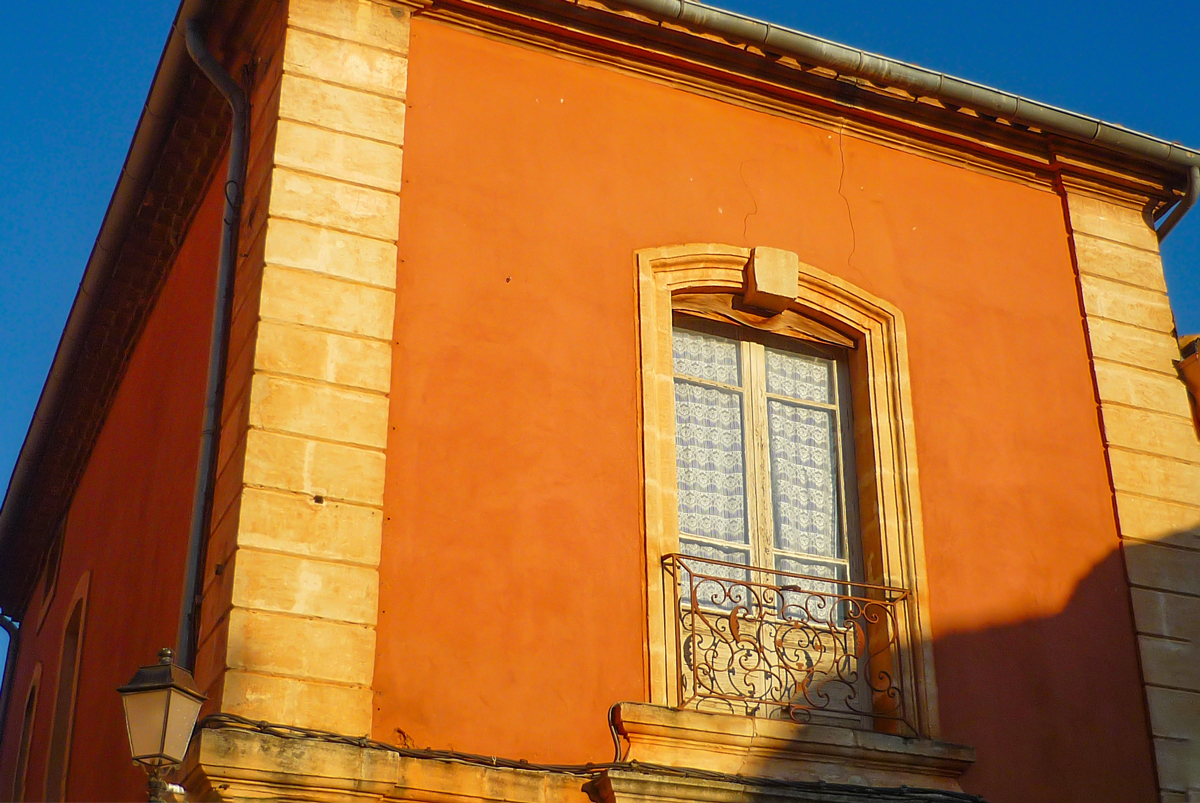
A town-house on Place de la mairie © French Moments

Details of houses in Place de la mairie © French Moments
The Belfry
This is the old gateway to the Castrum (the fortified wall). The belfry was remodelled in the 19th century as an annexe to the church.

The Belfry of Roussillon © French Moments
The first alley, on the left, leads to the old covered way, which once joined two towers of the ramparts. The district has kept the name "quartier de la Bistourle" (bistourle = two towers). Admire the beautiful view over the village and the surrounding area.
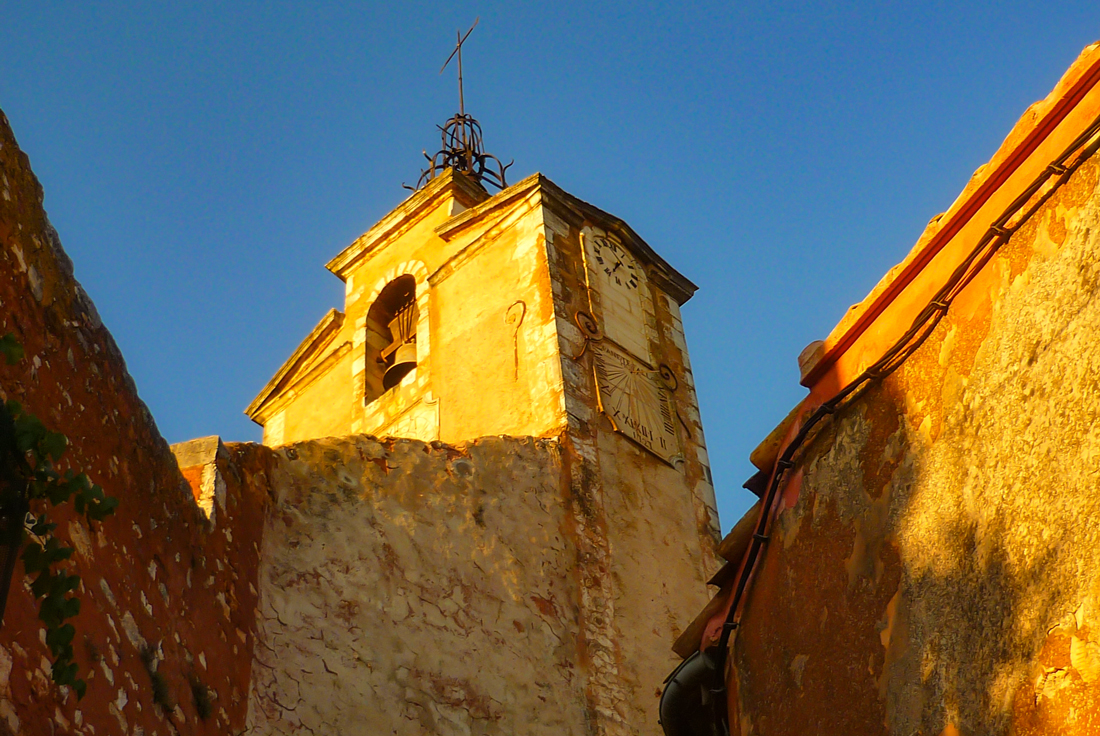
The Belfry of Roussillon © French Moments
Saint Michel Church
The original church dated back to the 11th century and was located inside the fortifications, facing the castle and the cliff. Its façade dates from the 17th century, and its choir from the 18th century.
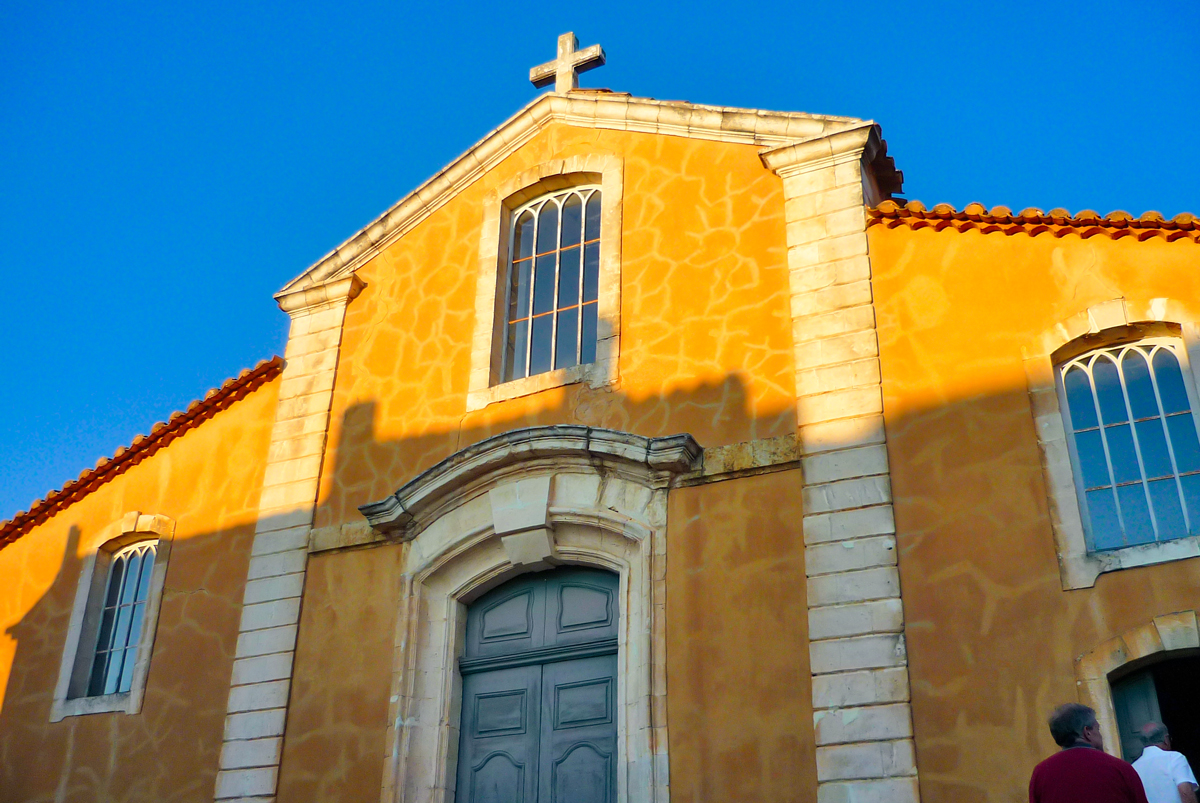
The façade of Saint-Michel church © French Moments
Place de la Forge
The square is located on the supposed site of the castle's courtyard (edified in 987), of which some remains and a small calvary remain.
The orientation table
This is the highest point in the village, from where you can see a vast panorama from the Luberon to the Monts de Vaucluse.
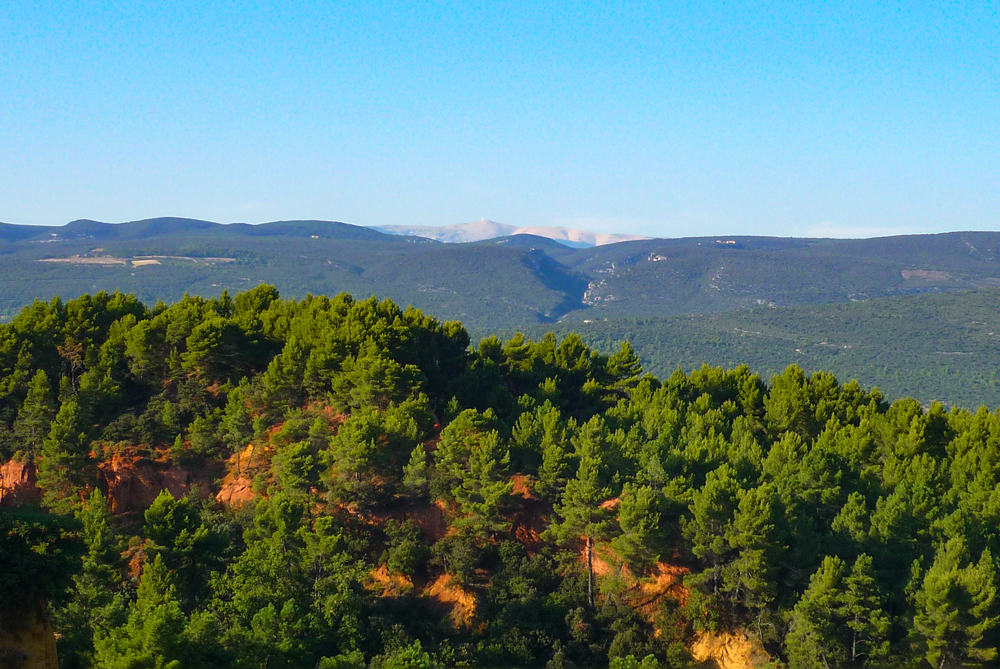
The view from the orientation table towards the Monts du Vaucluse and Mont Ventoux © French Moments
The cemetery
Have a peek at the village cemetery to see the ochre tombstones.
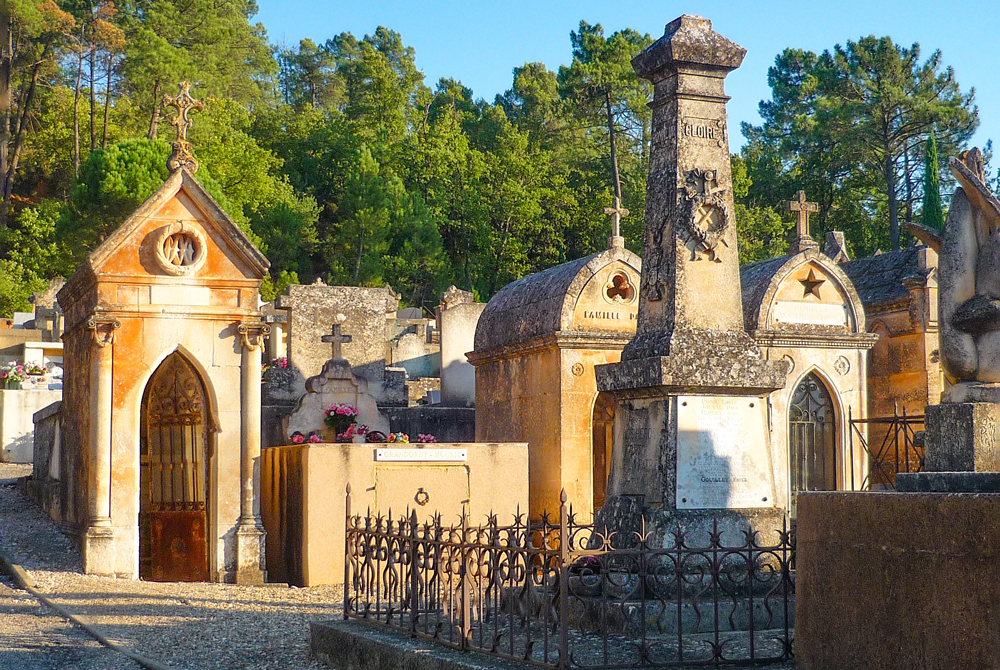
The cemetery of Roussillon with its ochre tombstones © French Moments
To enjoy a beautiful view of Roussillon, come in the morning via the following two roads:
- the road to Saint-Saturnin-lès-Apt (D227)
- the road to Goult (D104)
The village appears at the top of a steep hill where the red of the ochre is gradually revealed in the middle of the deep green of the pine forests.
Watch my guided walk of Roussillon
A 24-minute video that starts at the entrance of Roussillon and climbs to the church and the belvedere at the top of the village.
Roussillon: A bit of History
The history of Roussillon in Provence is a rich tapestry woven from millennia of human endeavour, natural wonders, and cultural evolution.
From the Greeks to the Middle Ages
The earliest known settlement in the area dates back to around 450 BC when the Greeks, recognised for introducing viticulture and olive cultivation to the Luberon, established a village. This ancient beginning set the stage for various cultural influences and historical events that shaped Roussillon's destiny.
The Gallo-Romans took over the region following the Greeks, preferring the valleys to the hills. However, with the decline of the Roman Empire, the inhabitants of Roussillon gravitated back to the more defensible hilltops, constructing a castrum—a fortified stronghold—to protect against invasions, such as the Saracen assault around the year 730.
The medieval period saw the establishment of the old castle on a motte-and-bailey, a type of fortification mentioned in records as "Rossillione" by 989. Centuries later, in 1541, the village faced a siege by 800 Waldensians seeking to liberate prisoners.
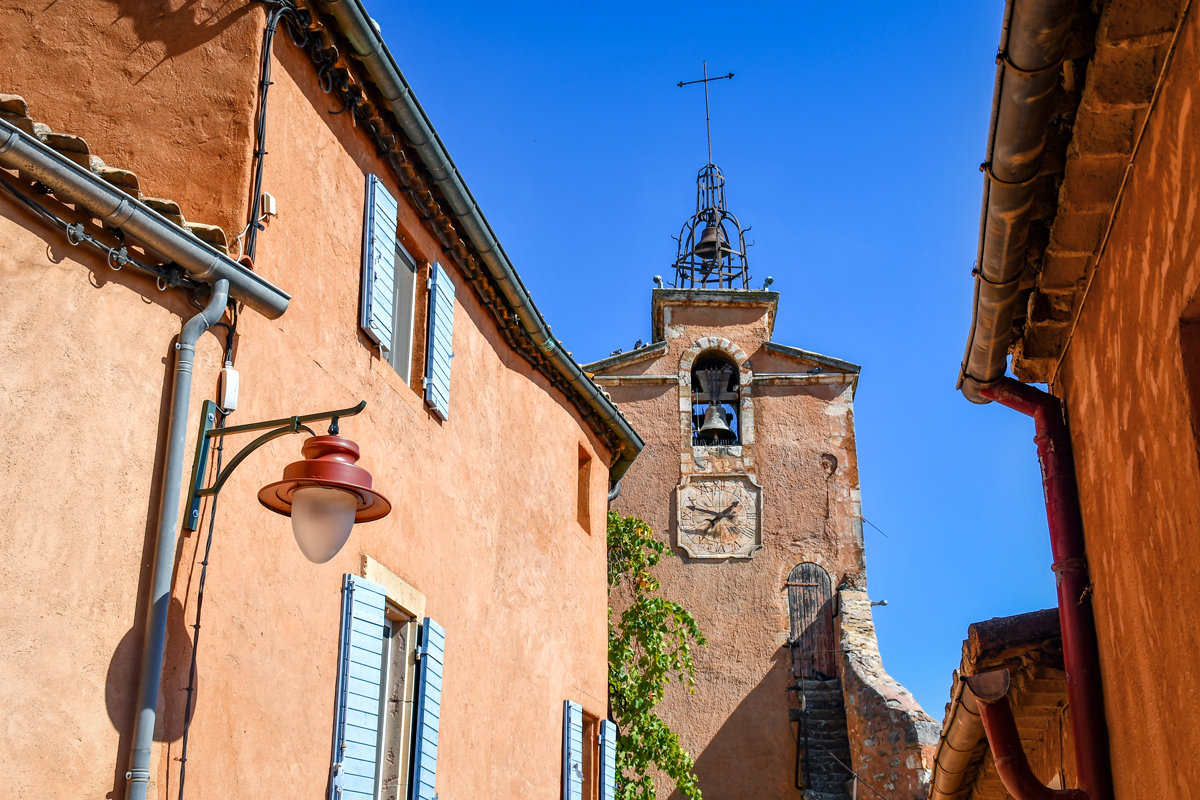
Campaniles of Provence - Roussillon © French Moments
The Ochre of Roussillon
Roussillon's vibrant narrative took a colourful turn with the exploitation of its large ochre quarries, a significant industry from the end of the 18th century until 1930. The 18th century, in particular, witnessed a surge in the demand for fabric dye, bolstering ochre production.
However, the 20th century brought challenges; the discovery of more lucrative mining sites and the advent of chemical pigments led to the decline and eventual cessation of ochre extraction. The once-thriving industry faced stiff competition from synthetic dyes, leading to a gradual abandonment of natural ochre.
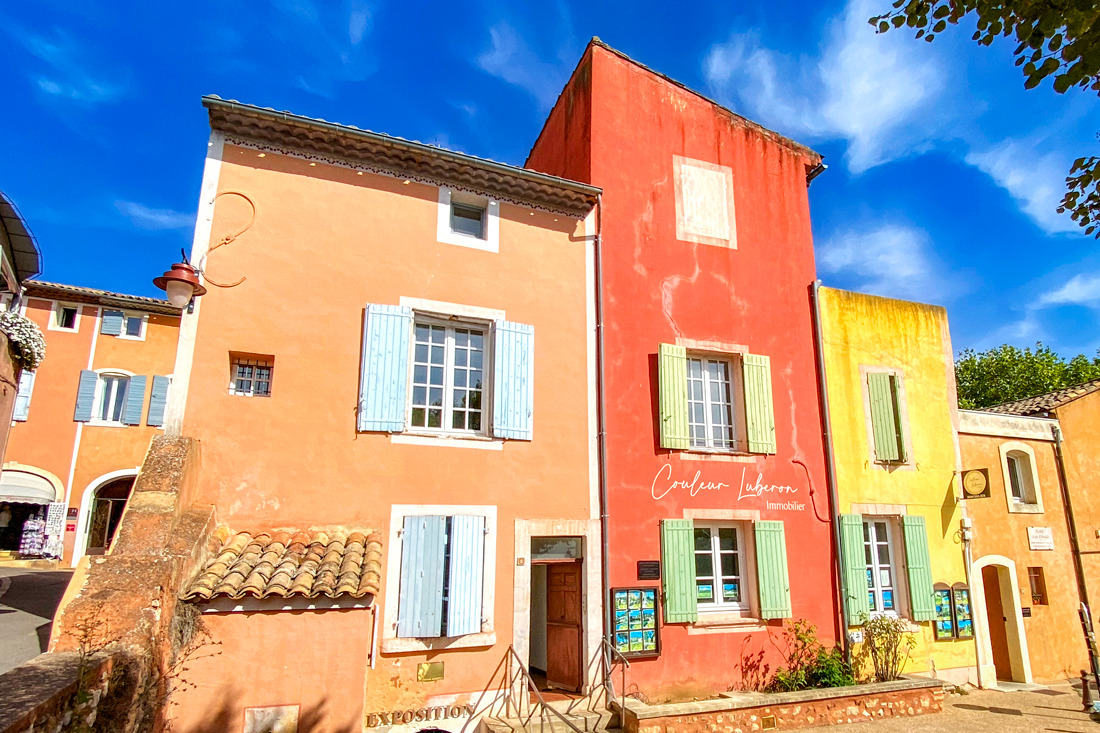
Colourful ochre façades in Roussillon
The development of tourism
Yet, Roussillon's ochre legacy found a new purpose—tourism. An ochre trail was developed within the old quarry, close to the village. This trail unveils remarkable landscapes carved by water, wind, and human intervention—fairy chimneys, vertical cliffs, and various colours that starkly contrast against the lush greenery reclaiming the site, especially the beautiful pine forests. The result is a fascinating journey, offering a total change of scenery.
From the 1980s onwards, tourism began to flourish. Although ochre is no longer extracted in Roussillon, the ochre trail, starting from the village, draws thousands of tourists each summer. The trail, thoughtfully developed and marked, meanders between the fairy chimneys—columns shaped by erosion—and leads to the 'chaussée des géants' and exclusively ochre cliffs, with colours ranging from violet to red, orange to yellow, in a dazzling display of warmth.
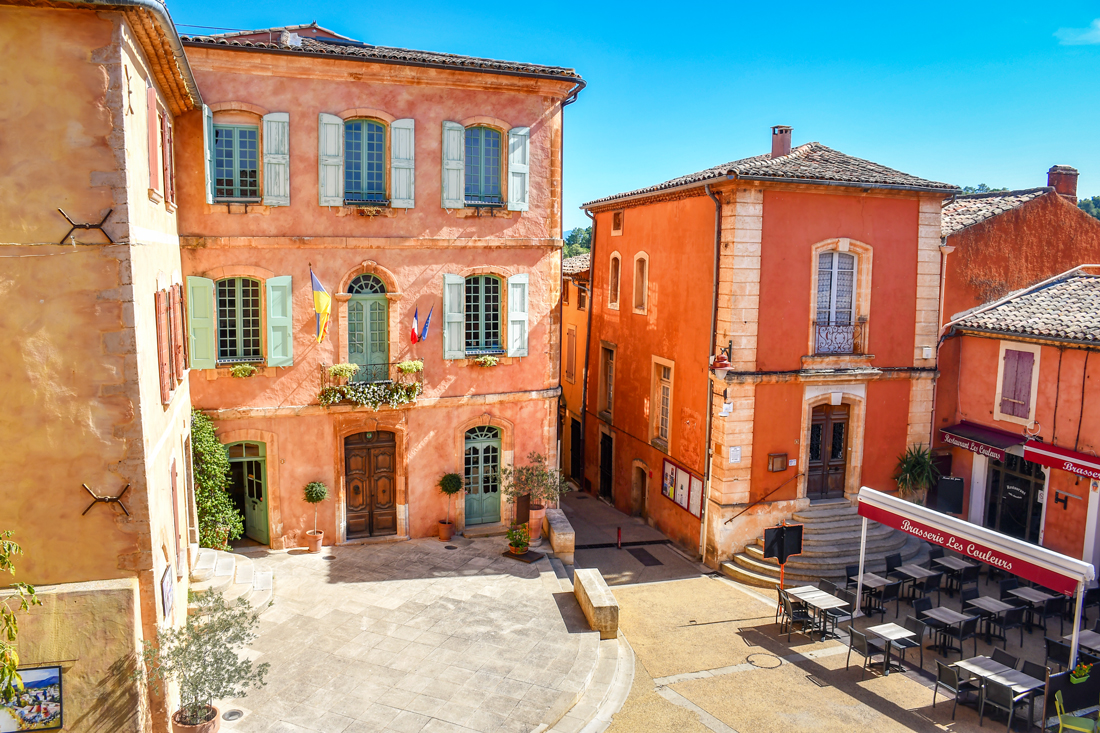
The town-hall of Roussillon
Samuel Beckett in Roussillon
Among the notable residents, Samuel Beckett, the renowned playwright, found refuge in Roussillon while fleeing the German police during World War II. This period influenced his seminal work, "Waiting for Godot."
In summary, Roussillon is not just a place but a living chronicle of nature's artistry, human resilience, and cultural richness, inviting all who visit to step into its story and be part of its continuing legacy.
The Ochre Quarries
The ochre quarries of Roussillon are made of great pigments ranging from yellow and orange to red. The mining of ochre has left its mark on the facades of Roussillon’s houses, and a stroll through the village at sunrise or sunset will reveal stunning colours.

Going down hill on the ochre Pathway in Roussillon © French Moments
The “Sentier de l’ocre” (ochre path) leads you through the old ochre quarries. If this astonishing landscape is the result of natural erosion by the wind and the rain, it has been accentuated by human hand which has cut deep galleries to extract the ochre.
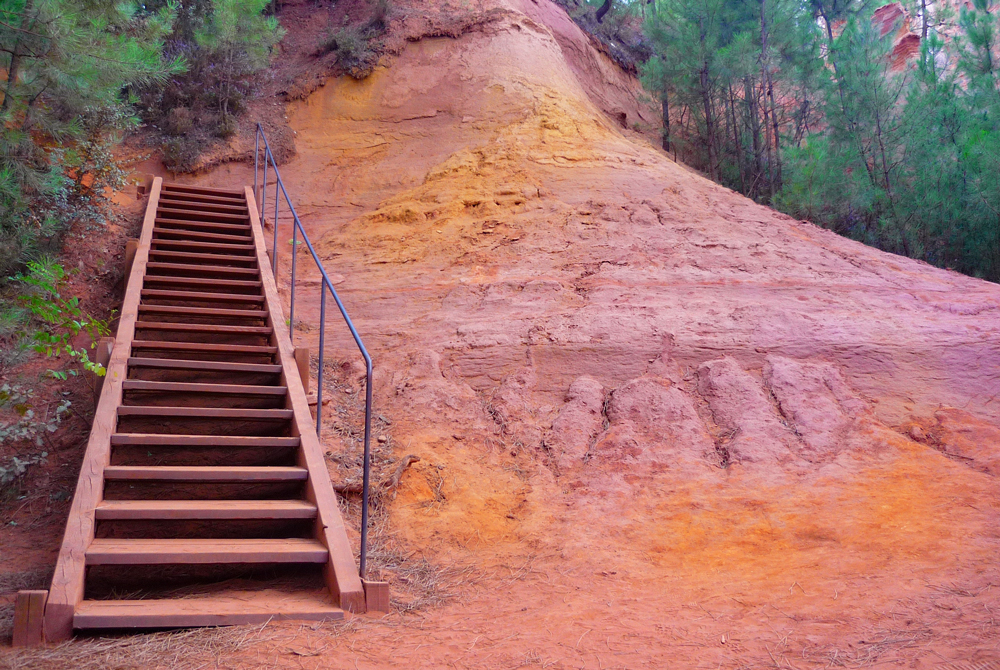
The path of the ochre © French Moments
In 1780, the colouring effect of ochre was discovered in Roussillon by Jean Etienne Astier, hence turning the peaceful village into a leading site of ochre production.
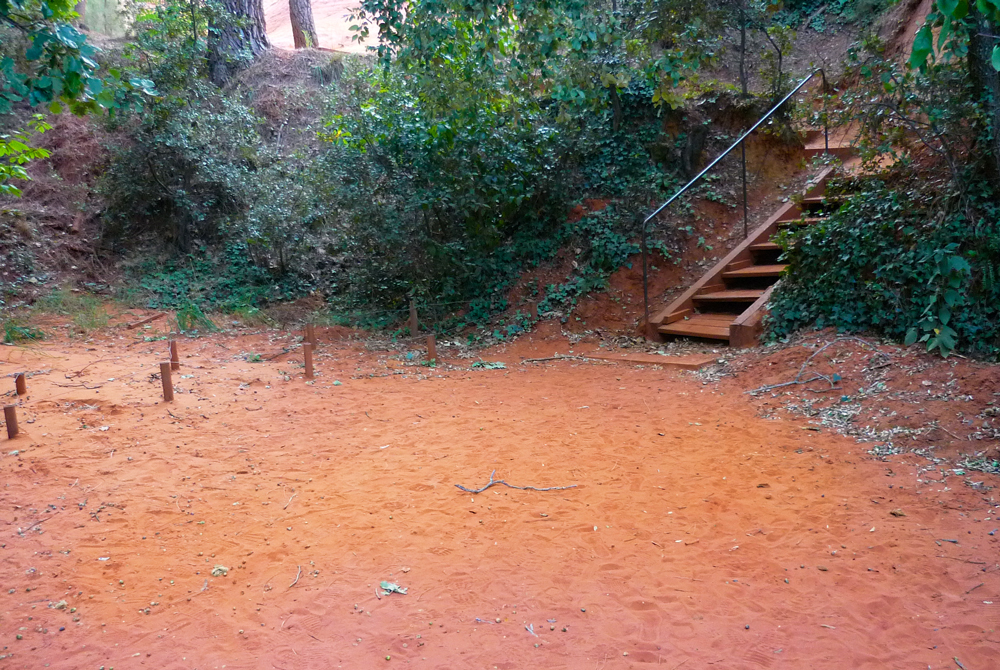
Down the ochre path © French Moments
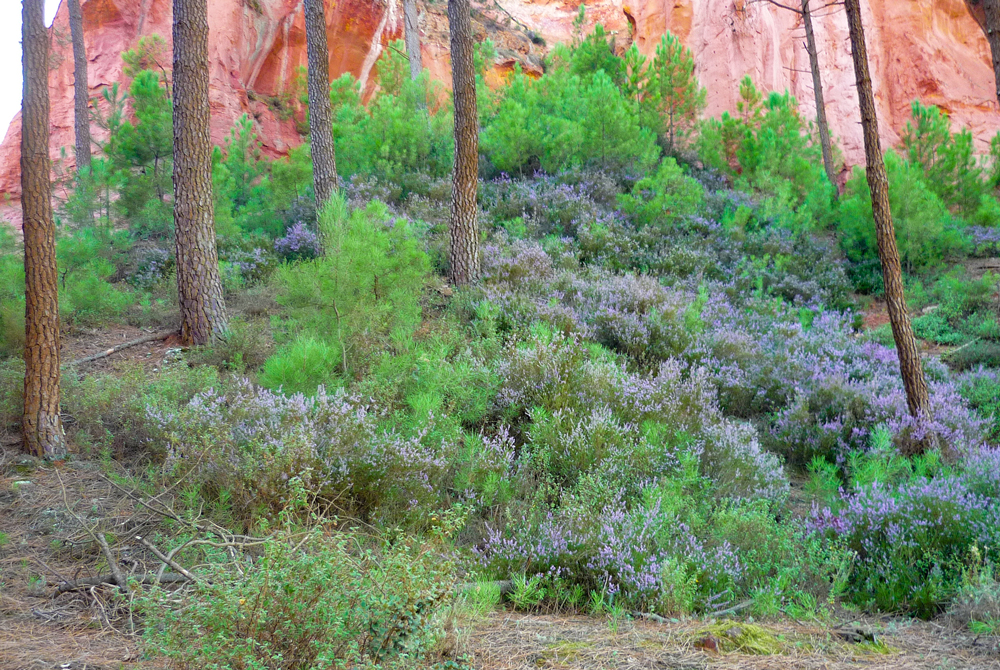
The ochre path © French Moments
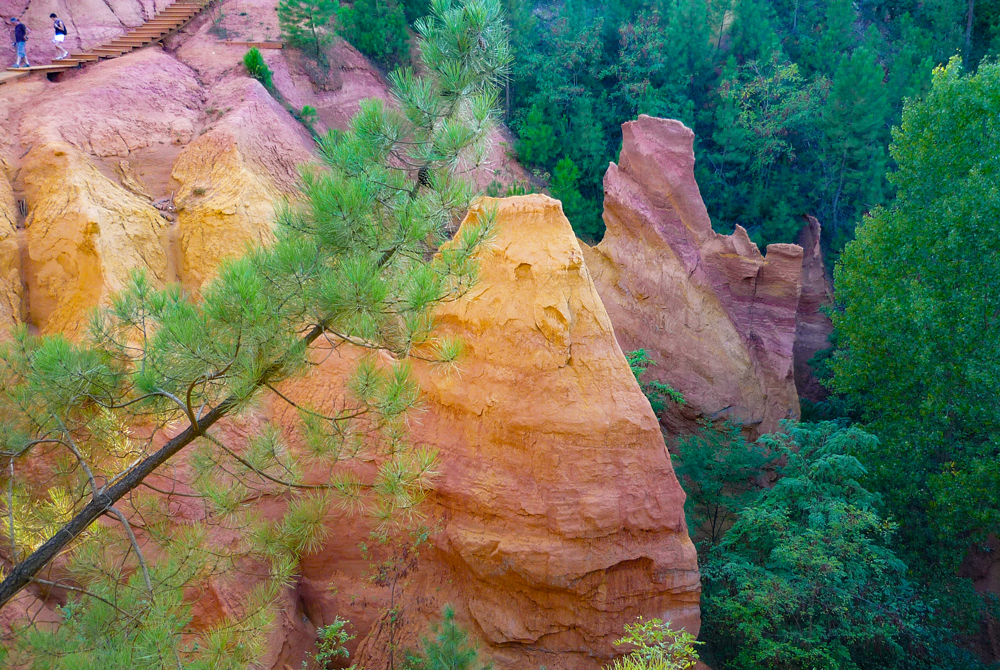
The beautiful colours of the ochres of Roussillon © French Moments
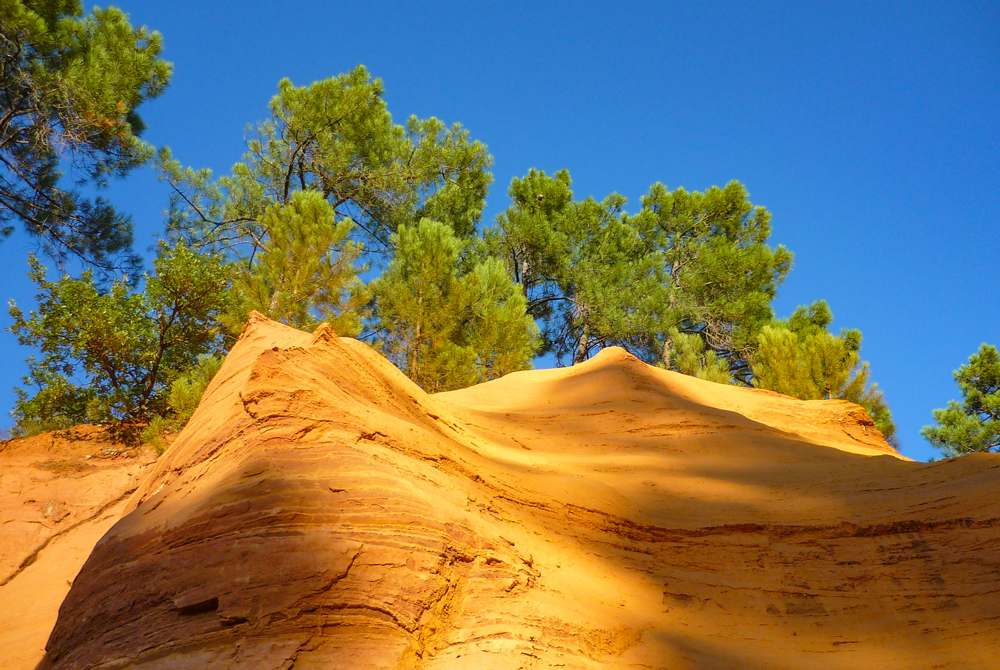
A low angle view of the ochre © French Moments
The legend of Lady Sirmonde
The legend behind the distinctive coloured ochre of Roussillon tells us a rather tragic story. Once upon a time, Lady Sirmonde, neglected by her husband, who was away too often, fell in love with Guillaume de Cabestan. When Sirmonde’s husband, Lord Raymond of Avignon, learnt about her infidelity, he plotted to kill Guillaume while hunting. Once Guillaume was dead, Raymond dug up his heart and gave it to the cook to be served to his wife. When Lady Sirmonde learnt about this terrible deed, she told him:
“You offered me such a good meal that never again will I wish to eat”.

The ochre cliffs of Roussillon © French Moments
When Raymond threatened her with his sword, she escaped and, in her flight, accidentally fell off the cliffs and died. The legend says that her blood had coloured the landscape of Roussillon forever.
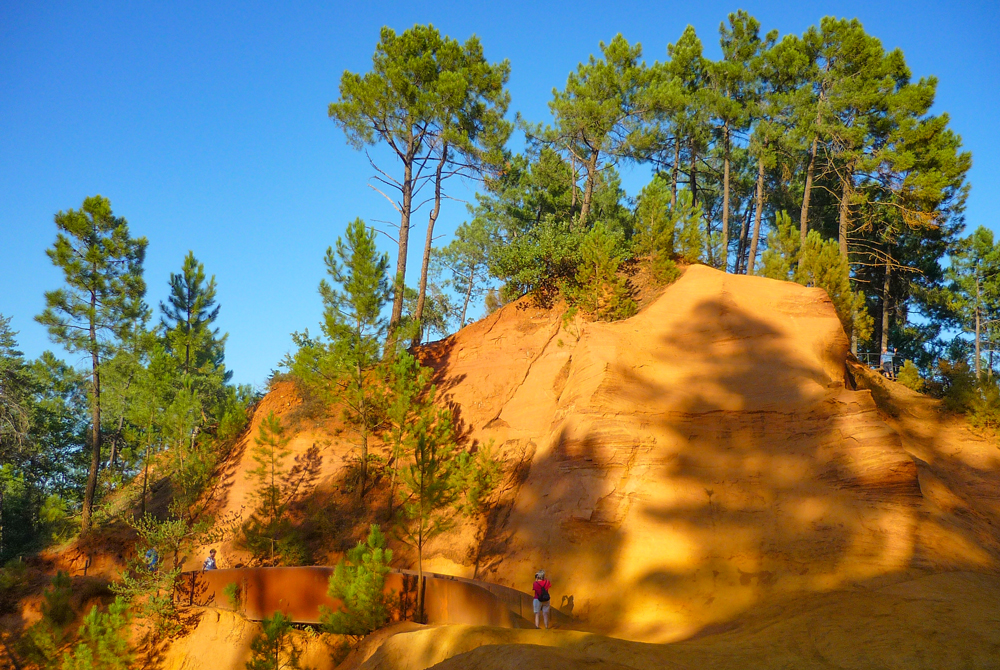
The ochre of Roussillon © French Moments
Find out more about Roussillon
Shops and restaurants in Roussillon
Here is a list of shops and restaurants in Roussillon. Please note that this list is indicative and may change over time.
Shops and amenities in Roussillon:
Boulangerie Au Temps Passé (bakery)
Avenue de la Burlière - Closed on Monday
Boucherie Laurent Pasero (butchery)
Rue de la Poste - Closed on Monday
SupéretteVival (convenience store)
113 Avenue de la Burlière - Closed on Monday
Le Petit Charreton (greengrocer)
20 Place de la Poste - Closed on Sunday
Epicerie fine Maison Brémond (gourmet grocery store)
21 rue Richard Casteau - Open everyday 10am - 5pm. website
La P’tite maison Bio (organic shop)
68 Avenue de la Burlière - Open everyday
Presse (newsagent)
Avenue de la Burlière - Open every day
Pharmacie (pharmacy)
Place du Pasquier - Closed on Sunday
Agence postale (post office)
19 Rue de la Poste - Open Monday-Friday
Médiathèque Simonne et Jean Lacouture (library and media centre)
21 Route de la Fontaine - Closed on Saturday and Sunday - Access to the media library and consultation of documents on site are free. However, to borrow documents from home, you need a subscription. website
Cafés and restaurants in Bonnieux:
Le Piquebaure (restaurant)
167 Avenue Dame Sirmonde - website
Restaurant David (restaurant)
1 Place de la Poste - website
La Grappe de Raisin (restaurant)
Place de la Poste - facebook
Le P'tit Gourmand (restaurant)
Place de l’Abbé Avon
La Sirmonde (restaurant)
Rue Richard Casteau - website
L'Escalier (restaurant)
26 Rue Richard Casteau
La Treille (restaurant)
8 Rue du Four - facebook
Café des Couleurs (restaurant)
Place de la Mairie - facebook
Chez Nino (restaurant)
16 Rue des Bourgades - website
Glacier (Ice-cream)
5 Place de l'Abbé Avon
The nearest supermarkets to Roussillon:
Lidl in Apt (8 km / 5 mi) - website
E. Leclerc in Apt (11 km / 7 mi) - website
Super U in Coustellet (17 km / 10.5 mi) - website
Traditional Provençal Market of Roussillon
The Provencal market takes place every Thursday from 8am to 12pm in the Place du Pasquier.
In terms of flavours, the market offers an array of ingredients for you to craft your meal – from vegetables, cheese, and sausages to tapenade, spices, honey, gingerbread, olive oil, and pizzas.
But Roussillon's market isn't just about food. It's also a hub for local artisans. You'll find painters, jewellers, photographers, and creators of table linens and cutlery. There are stalls laden with trinkets, sun hats, fashion accessories, and the fragrant Provençal scents that define the region.
How to get to Roussillon
Roussillon is located at :
- 100 km from Marseille
- 60 km from Aix-en-Provence
- 50 km from Avignon
- 25 km from Cavaillon
- 13 km from Apt
By road
From Avignon, follow the D900 road (50 km, about 50 min).
From Aix-en-Provence, reach Pertuis via the A51 motorway then follow the D973 to Cadenet and the D943 / D36 via Lourmarin and Bonnieux. Follow the D149 and D108 to Roussillon.
Coming from Marseille and Salon-de-Provence, take the A7 motorway, exit at Cavaillon and join the D900 to reach Roussillon.
Nearest airport
The nearest airport is Marseille-Provence. It is possible to reach Cavaillon by bus or train. From Cavaillon there are local bus routes to Roussillon.
Holiday accommodation in Roussillon
Roussillon has a high capacity for holiday accommodation. The commune has several hotels, including five three-star hotels, many bed and breakfasts (covering all price ranges), several estate agencies offering seasonal rentals, gîtes and a three-star campsite.
Click here to book your accommodation in the Luberon or browse the map below:
On the blog and other websites
Here are some pages from our blog and other websites to find out more about this Provencal destination.
- Discover the hilltop villages of the Luberon
- Find out more about Provence-Alpes-Côte d'Azur
- The official tourist office of the area
- Check out the Tourist Information board of Roussillon
What to do in the Luberon
Be inspired by a list of things to do in the Luberon:
Pin Roussillon on Pinterest
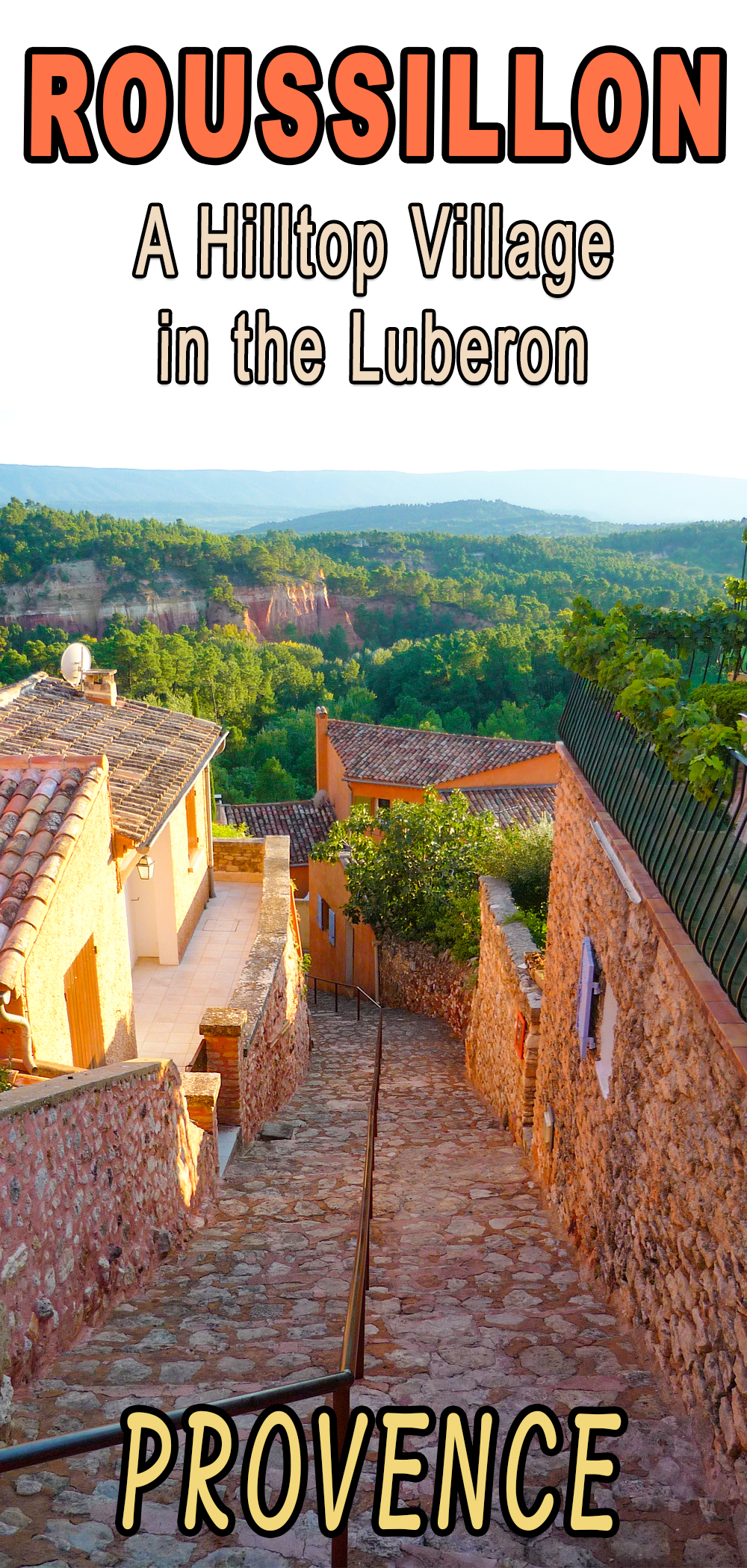
Have you been to Roussillon? Share your experience by commenting below! 🙂

